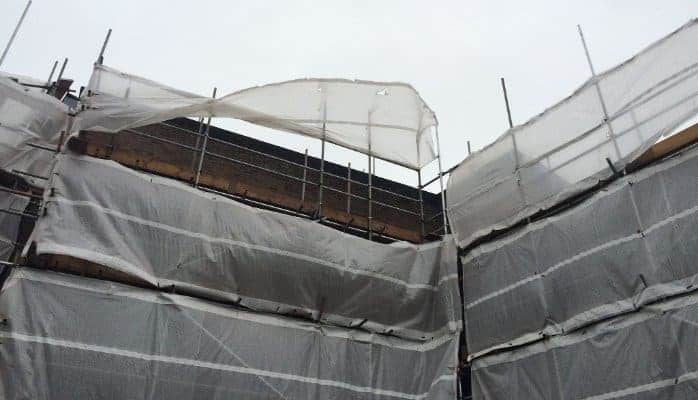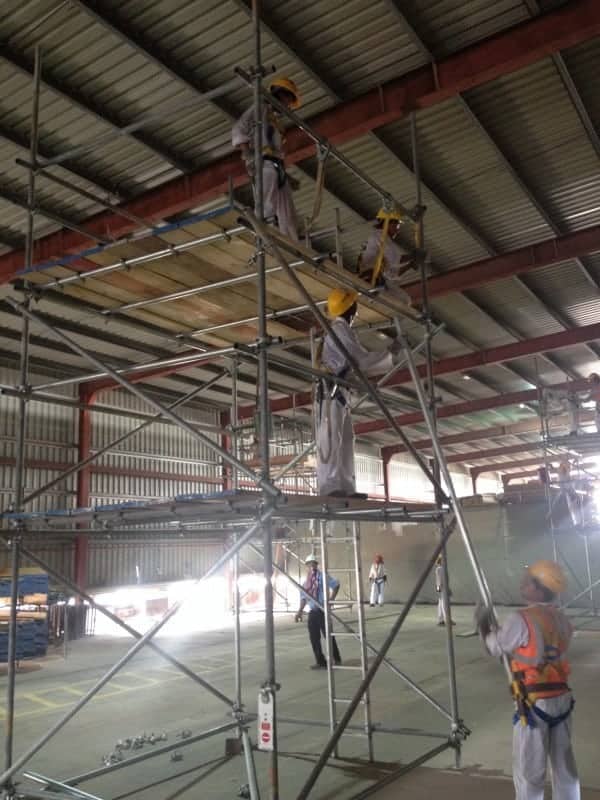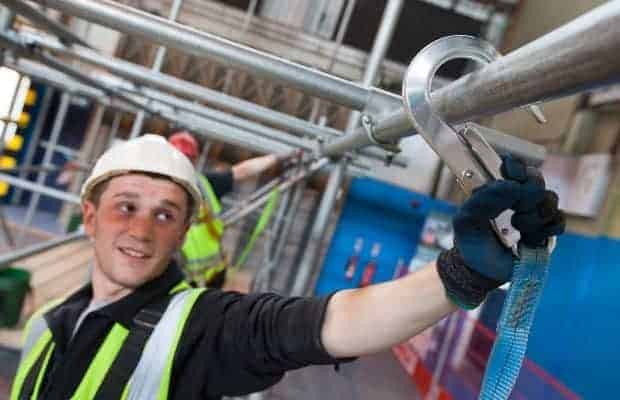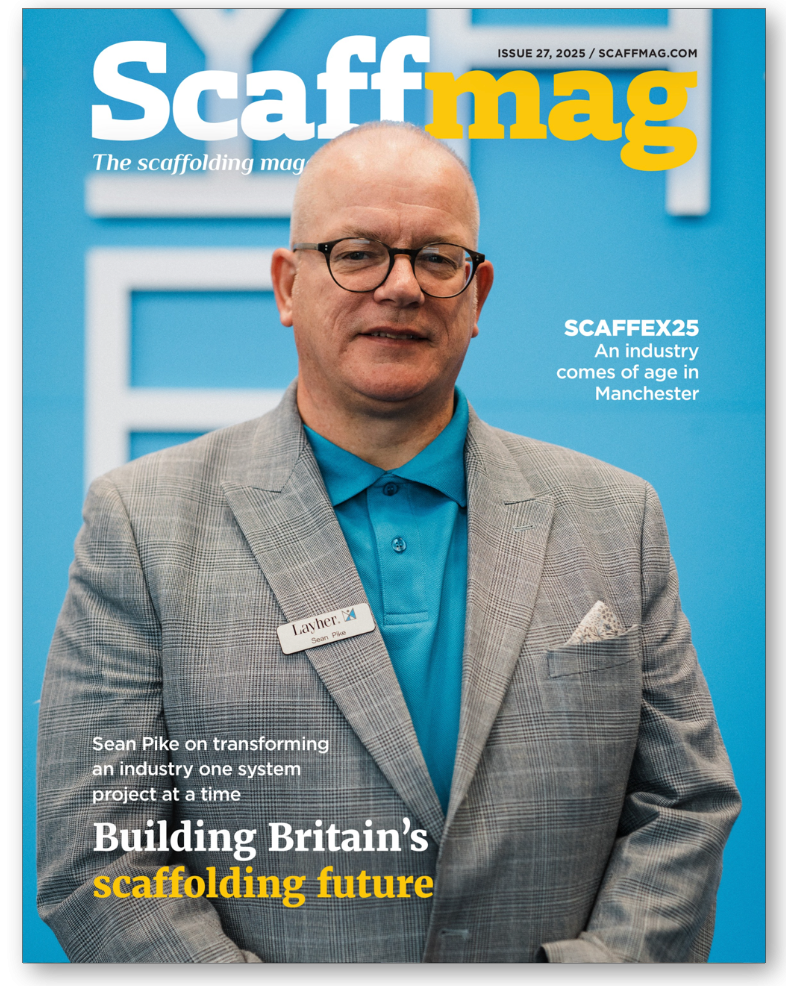Don’t use shrink wrap on your next project!
“I think you probably should not use shrink wrap sheeting for your next project” says company Director.
Steve Irlam of Rhino Shrink Wrap Martial Supplies has recently blogged about the advantages and disadvantages of using Shrink Wrap Sheeting. Within his informative article below Steve also highlights the responsibilities contractors face when using this specialised material. Traditional scaffold sheeting, like ‘Monarflex’, has long been available and provides some weather protection and a degree of ‘containment’ for many projects. Applied to the scaffolding in 2-3m wide strips, this product is low cost, widely available and every scaffolder has a ‘rough’ idea how to fit it. Shrink wrap sheeting, used for the last 15 years by the majority of the top 100 scaffolders and contractors in the UK on bridges, railways, power stations, airports – (anywhere where the sheeting detaching could have serious consequences for safety or the environment) is a more specialised activity. Because of this, scaffolders and contractors normally only consider shrink wrap when they are looking for a higher level of performance in one or more of the following areas; Containment – Activities such as shot blasting, generate residues which can be harmful to the environment. Because individual shrink wrap sheets are joined using a heat welding process, they create a ‘continuously bonded skin’ around a project. Traditional plastic sheeting and duct tape will not ‘cut it’ anymore for responsible contractors. Weather resistance – One of the first large scale uses for shrink wrap sheeting in the UK was the encapsulation and containment of scaffolding around the Forth Rail Bridge in Scotland where wind speeds could exceed 100mph. The environmental problems caused by detached sheeting and toxic paint residues being deposited in the Firth of Forth were prevented by using shrink wrap. Since then, shrink wrap sheeting has been used extensively by a wide range of clients such as Network Rail, National Grid and ‘heritage’ projects; anywhere detached sheeting could have serious implications. With a high performance product comes the responsibility to ensure that the scaffolding structure is engineered to withstand wind loads, (including point loadings). It is important that the specialist shrink wrap installers work together with scaffold designers, scaffolders and contractors.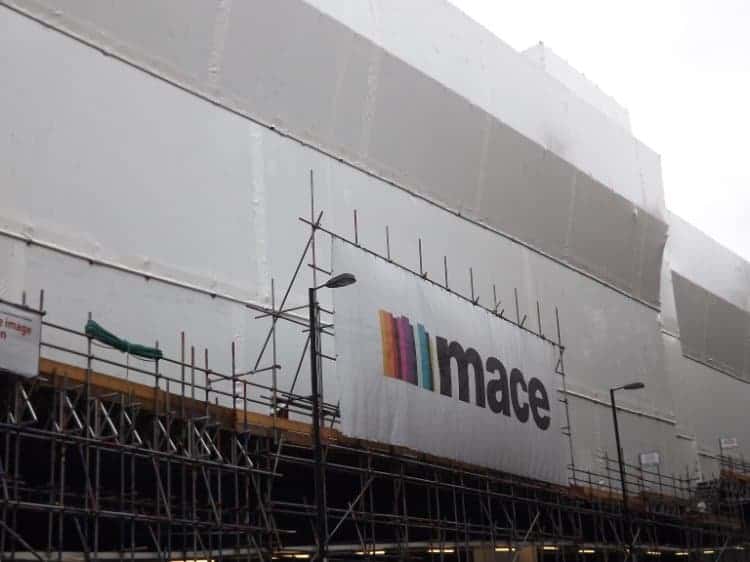 Appearance – The smart & professional appearance of scaffold sheeting, can be a benefit to contractors, particularly on high profile sites in urban areas such as Central London. Additionally, where scaffolding is erected around buildings which are occupied, such as hospitals or apartments, the noise of traditional scaffold sheeting flapping can cause complaints. Because shrink wrap sheeting is heat shrunk very tightly around the scaffolding, this problem can be minimised.
Despite the benefits of shrink wrap for scaffolding encapsulation and containment, here are 5 reasons you might not want to use shrink wrap on your next project;
1. YOU CAN’T WAIT FOR A WEATHER WINDOW
Once fitted and heat shrunk ‘drum tight’, scaffold shrink wrap is very resilient to wet and windy weather. However, to fit shrink wrap sheeting over and around a scaffolding structure successfully needs good weather during installation to get the best results, particularly to get that ‘signature’ drum tight finish from the heat shrink process.
2. YOU ARE ON A VERY TIGHT BUDGET
Although shrink wrap sheeting material costs from only £1.35/m2, shrink wrap will never be able to undercut traditional scaffold sheeting on price alone. With scaffold shrink wrap there will always be some extra labour costs for fitting by trained teams. Clients who need the extra performance of scaffold shrink wrap, generally understand the extra costs involved. If you just need a ‘bit of sheeting’ for a client who wants the lowest price at all costs then probably a traditional scaffold sheeting product like Monarflex is a better option. When using a shrink wrap scaffold sheet always make sure you obtain an up to date specification and flame retardant certificate, a ‘cheap’ shrink wrap may not have been engineered specifically for scaffolding use.
3. THE SITE WON’T ALLOW HOT AIR GUNS
The ability of scaffold shrink wrap to withstand high winds derives from it’s ability to be heat shrunk ‘drum tight’ around the scaffolding structure and to do this requires hot air to be blown across the surface of the sheet by a hot air gun! Shrink wrapping guns are usually powered by propane gas as this creates a powerful heat source that is able to shrink large areas rapidly. Industrial grade electric heat guns are available but compared to a propane gas shrink wrap gun the electric tools are slow, heavy and expensive tools and are not considered of practical use for the shrink wrapping of scaffolding.
4. YOU NEED TO MAKE LOTS OF ADAPTIONS
Traditional reinforced scaffold sheeting is easily removed and so ideal for situations where lots of adaptions are needed to the scaffolding structure. Once the shrink wrap has been heat welded into place, it cannot easily be removed and refitted.
5. THE SCAFFOLDING STRUCTURE IS NOT FLUSH
To get the full benefits from shrink wrapping, the scaffold structure should be ‘flush’ with no protruding ledgers, transoms or standards. This is particularly true where a high level of environmental containment is needed (such as a shot blasting and painting). Protruding tubes make fitting a sheet difficult and it can be time consuming to tape around each scaffold tube protrusion. If the structure cannot be built flush, or you do not want to cut any tubes then a traditional sheeting might be a better option.
In summary, shrink wrap sheeting is definitely not for every scaffolder or contractor.
Used correctly, shrink wrap sheeting can be very effective but like any tool, with a high level of performance comes a responsibility to ensure that the product is fitted properly and with proper regard to planning to ensure safe outcomes.
I hope you find this information useful. If you think others would too, please share!
I don’t claim to be an ‘expert’, I am always learning something, but the information in this article is based on many years personal experience setting up and running multiple shrink wrap installation teams and supplying materials to scaffold companies and construction contractors.
You can find more ‘how to’ guides, shrink wrapping case studies and product information at www.rhinoshrinkwrap.com
By Steve Irlam
See the original blog here
Appearance – The smart & professional appearance of scaffold sheeting, can be a benefit to contractors, particularly on high profile sites in urban areas such as Central London. Additionally, where scaffolding is erected around buildings which are occupied, such as hospitals or apartments, the noise of traditional scaffold sheeting flapping can cause complaints. Because shrink wrap sheeting is heat shrunk very tightly around the scaffolding, this problem can be minimised.
Despite the benefits of shrink wrap for scaffolding encapsulation and containment, here are 5 reasons you might not want to use shrink wrap on your next project;
1. YOU CAN’T WAIT FOR A WEATHER WINDOW
Once fitted and heat shrunk ‘drum tight’, scaffold shrink wrap is very resilient to wet and windy weather. However, to fit shrink wrap sheeting over and around a scaffolding structure successfully needs good weather during installation to get the best results, particularly to get that ‘signature’ drum tight finish from the heat shrink process.
2. YOU ARE ON A VERY TIGHT BUDGET
Although shrink wrap sheeting material costs from only £1.35/m2, shrink wrap will never be able to undercut traditional scaffold sheeting on price alone. With scaffold shrink wrap there will always be some extra labour costs for fitting by trained teams. Clients who need the extra performance of scaffold shrink wrap, generally understand the extra costs involved. If you just need a ‘bit of sheeting’ for a client who wants the lowest price at all costs then probably a traditional scaffold sheeting product like Monarflex is a better option. When using a shrink wrap scaffold sheet always make sure you obtain an up to date specification and flame retardant certificate, a ‘cheap’ shrink wrap may not have been engineered specifically for scaffolding use.
3. THE SITE WON’T ALLOW HOT AIR GUNS
The ability of scaffold shrink wrap to withstand high winds derives from it’s ability to be heat shrunk ‘drum tight’ around the scaffolding structure and to do this requires hot air to be blown across the surface of the sheet by a hot air gun! Shrink wrapping guns are usually powered by propane gas as this creates a powerful heat source that is able to shrink large areas rapidly. Industrial grade electric heat guns are available but compared to a propane gas shrink wrap gun the electric tools are slow, heavy and expensive tools and are not considered of practical use for the shrink wrapping of scaffolding.
4. YOU NEED TO MAKE LOTS OF ADAPTIONS
Traditional reinforced scaffold sheeting is easily removed and so ideal for situations where lots of adaptions are needed to the scaffolding structure. Once the shrink wrap has been heat welded into place, it cannot easily be removed and refitted.
5. THE SCAFFOLDING STRUCTURE IS NOT FLUSH
To get the full benefits from shrink wrapping, the scaffold structure should be ‘flush’ with no protruding ledgers, transoms or standards. This is particularly true where a high level of environmental containment is needed (such as a shot blasting and painting). Protruding tubes make fitting a sheet difficult and it can be time consuming to tape around each scaffold tube protrusion. If the structure cannot be built flush, or you do not want to cut any tubes then a traditional sheeting might be a better option.
In summary, shrink wrap sheeting is definitely not for every scaffolder or contractor.
Used correctly, shrink wrap sheeting can be very effective but like any tool, with a high level of performance comes a responsibility to ensure that the product is fitted properly and with proper regard to planning to ensure safe outcomes.
I hope you find this information useful. If you think others would too, please share!
I don’t claim to be an ‘expert’, I am always learning something, but the information in this article is based on many years personal experience setting up and running multiple shrink wrap installation teams and supplying materials to scaffold companies and construction contractors.
You can find more ‘how to’ guides, shrink wrapping case studies and product information at www.rhinoshrinkwrap.com
By Steve Irlam
See the original blog here Cape awarded 5 year contract at Fawley Refinery
Cape plc has successfully obtained a 5-year contract with ExxonMobil for the supply of access, insulation and associated services to Fawley Refinery in the UK.
ExxonMobil is the world’s largest publicly traded international oil and gas company. It holds an industry-leading inventory of global oil and gas resources, is the world’s largest refiner and marketer of petroleum products, and its chemical company ranks among the world’s largest. Cape won the contract following a detailed tender in 2014. Cape has previously supplied ExxonMobil with specialist access and thermal insulation services in support of maintenance and projects activities at Fawley Refinery. This is the first time, however, that ExxonMobil has chosen to combine the access and insulation under a single contract. Joe Oatley, Chief Executive Officer of Cape plc commented: “We are delighted to have been awarded this contract which we were able to win by demonstrating to ExxonMobil the value that Cape can deliver with our innovative approach to both access and insulation. We will be working hard over the coming months to ensure we achieve a smooth transition and I look forward to continuing our long-standing relationship with this important client.”Safety & Access Granted CISRS Accreditation In UAE
Safety & Access announce that their CISRS overseas Training Centre in the United Arab Emirates has gained accreditation for a further year.
The independent accreditation audit was undertaken today by CISRS scheme manager David Mosley and as a result of the findings has granted accreditation for a further year. Safety & Access have been delivering quality training in the region for over two years and are proud to be associated with the independent original UK card scheme. Rick Statham – Joint MD for Safety & Access commented ” The CISRS scheme is based upon the successful and original UK scaffolders competence scheme and we are very proud to be associated with this. There are other poor imitations of scaffolding training schemes in the GCC region that claim to be UK and are currently misleading clients. We have successfully opened others CISRS centres in Korea and India and have further immediate plans for centres in Qatar and Saudi. We believe that through consistent high quality delivery and adoption by clients that the CISRS scaffolding training scheme will soon attain its global position as the premier class for access training“Scaffolding Gives Way After Major Building Collapse In London
Part of a building that is being demolished has collapsed bringing down a large part of scaffolding with it in central London today.
At around 4:00pm this afternoon (20th April) Scaffolding on at least four floors of the building collapsed spilling onto the street below, London Fire Brigade have reported around 200 people have been evacuated from the area. Firefighters were called to the incident on the junction between Portugal Street and Serle Street, near Aldwych, London at around 4:15pm.Building on Portugal Street in #Holborn just collapsed. #LSE staff being evacuated. pic.twitter.com/V5H9vPTlW1
— Charlie (@charlieheinz) April 20, 2015
One man has been taken to hospital with non-life threatening injuries officials have said.
A police spokesman said the Health and Safety Executive has been informed and added that roads have been closed.

CISRS Cracks Down On Part 1 ‘Loophole’
The CISRS Part 1 Scaffolding Training course ‘loophole’ closes after standardisation program highlights loophole.
The Construction Industry Scaffolders Record Scheme (CISRS) has announced that, as of 1st September 2015 anyone wishing to attend a CISRS Part 1 Scaffolding Training course must now of held a valid CISRS Trainee Scaffolder of Labourer card for a minimum of six months. Previously, the rule was that a delegate must have had a minimum of six months on site experience as a Trainee Scaffolder or Labourer working under the direct supervision of a qualified scaffolder. They were not however requested to provide a copy of a valid CISRS card at this stage to demonstrate registration to the scheme and help establish their time within the industry. CISRS say in a recent press release: ‘The current on-going standardisation programme has helped to highlight this loophole. Around two years ago the CISRS Operative Training Scheme (COTS) course was introduced for New Entrant Trainees and Labourers which allowed a lot of the essential generic health and safety, manual handling and component recognition type training to be delivered in the initial stages of an individual’s career within the sector. Anyone applying for a CISRS Trainee or Labourer card after June 2013 was required to complete COTS training. The Introduction of this course allowed the standardisation group to consider reducing time spent on those modules within the Part 1 programme in favour of more up to date industry guidance and best practice e.g. TG20:13, and introduction to Scaffold inspection etc. Although it was becoming an increasingly rare occurrence some delegates were still attending Part 1 courses without having completed COTS training or holding a CISRS Labourer or Trainee card. There have been instances where a delegate will claim to have had the relevant prior on site experience, however upon attending the course it is apparent that this is not the case and they will subsequently fail the course. As such it was agreed by CISRS and the Access and Scaffolding Industry Training Organisation (ASITO) that this loophole should be should be closed. The new rule was initially going to be introduced with immediate effect but it was felt that industry should be given a short notice period to be made aware of the changes to the scheme. This would also accommodate those who had previously booked a Part 1 course prior to the announcement, it has since been confirmed that the rule will now be implemented from 1stSeptember 2015′. Dave Mosley CISRS Scheme Manager said: “We think that this is a sensible change of scheme rules and is basically a case of housekeeping. The standardisation programme has highlighted a few minor anomalies within current scheme criteria and these are now being addressed.”The NASC announces the launch of its 2015 Safety Report
The NASC has today launched its 2015 Safety Report – documenting accident statistics for all NASC full contracting member companies in 2014, covering 14,988 operatives, which constitutes a major proportion of the UK’s total scaffolding workforce.
All 200+ NASC full contracting members are required to submit a completed annual accident return as a requirement of their membership, and the NASC Safety Report is based on data generated by this exercise. It features:- Injuries and fatalities to operatives, members of the public and third parties.
- Accident causes and types.
- Detailed analysis of accidents.
- Comparison of HSE/NASC accident statistics.
- What the NASC does to support safe scaffolding practice.
From Scaffolder To Scaffold Design – My Story
An ex-scaffolder explains how he made the transition from being a well paid scaffolder to become a Technical Design Draughtsman at one of the UK’s leading scaffold design firms.
So you have put in the hours day in day out of hard graft, successfully working your way up the industry ladder and finally making it into the fold by becoming an highly experienced fully compliant scaffolder… but have you ever contemplated on what you should do next in your career..? How about Scaffold Design ? Ex-scaffolder Alex Kirk of 48.3 Scaffold Design shares his inspiring story, in his own words Alex reveals how one day he laid down his spanners for the final time to begin his journey to become a Technical Design Draughtsman at one of the UK’s leading scaffold design firms. Alex’s story emphasises on a huge personal sacrifice he and his family have made, his hard work, dedication and drive resonates throughout the piece.Alex Kirk’s Journey
Over the course of my time within the scaffolding industry by far and away the most popular question amongst scaffolders who have achieved a decent level of competency is: “how much did you take home last week?” the second most common question is “How do you become a Scaffold Designer?” although the answer to the first question is relatively simple (enough to come back this week!) the second is not as clear cut and simple. My own path to becoming a Technical Design Draughtsman is by no means the only route available but it is the route that I have taken. You could say I was lucky in that I am a third generation scaffolder; whose family owns their own scaffold firm. So really I have been privileged to be in and around scaffolding since before I could walk. I often joked that my dad gave me a spanner as a baby instead of a rattle, in fact that’s an exaggeration but not as big as you might expect. I think the most important trait anybody who wants to make the transition needs above all is ‘Drive’. This is not an easy path to follow. For example in 2009 I was a charge hand scaffolder earning relatively good money on some large construction projects with my girlfriend (now wife) pregnant with our first child. It was at this point I decided I needed to get the ball rolling in pursuing my long term career ambitions, I knew I didn’t want to stay scaffolding forever but I wanted to be able to use the experience and knowledge I had gained over the years. As soon as I started to look at other professions within the industry it became abundantly clear I was going to need to further my education.My educational path
Having not been in formal education for some time, this was a scary realisation. Initially I studied for a NEBOSH General Certificate through work. In my opinion this was a fantastic course that not only provided me with a broader knowledge of the construction industry but also prepared me mentally for learning. After the completion of the NEBOSH course I looked around at institutions that provided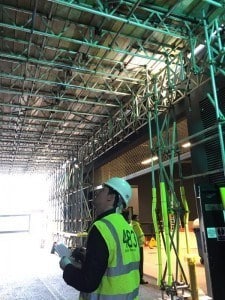 part time engineering courses (of which there were several). I rang them all up and talked to the lecturers about my position and what they thought about me taking the course as I
hadn’t taken math’s since GCSE. Bolton University were by far the most helpful and their HNC Civil Engineering course was centered on industry which I thought would suit me personally. I took all the information I had collected and talked to my employers to ask if they were willing to help me; thankfully they did, giving me a day release every week to attend college and pay the tuition fees which I am incredibly grateful for.
As I mentioned previously, being driven to achieve your goal is crucial, having a young family I wanted to provide for became my driving force. However, ironically because I was studying and working in tandem, I was juggling working, studying and a home/social life. This was not sustainable and sacrifices had to be made. I wasn’t able to always go to the park with the kids or go to the pub to watch the football with my mates as I had studying to do. I would be working most nights sometimes until 2 or 3am in the morning then getting up at 6.30am and going to work. I know that sounds like a Monty Python sketch but it is the reality of the amount of work needed. I’d like to be able to tell you how many hours a week you will need to study in order to pass the HNC but in all honesty I couldn’t tell you. What I can tell you is that I did something everyday, whether that was writing an assignment or simply watching a YouTube video on beam analysis.
As long as the driving force behind why you are looking to make this transition is strong enough you’ll make those sacrifices without even noticing you are making them. For me, it is only when I look back do I realise how hard it has been and I’m still training!
The second common misconception is that scaffold design is the construction industries equivalent to the premier league footballer, paid a fortune for easy work. In reality the designs you see as a scaffolder are the end product of many hours hard work both designing and proving through calculation that the designs work. I was once told that this transition is like swapping from the top of a ladder leaning against the wrong house to the bottom of a ladder leaning against the right house. I know this sounds a little silly but it resonated with me as when I left scaffolding to take up a position here at 48.3 Scaffold Design I took a huge pay cut. The truth is I would of probably taken an even bigger pay cut to take the job as I saw it as my first foot on the right ladder! I was competing for this position with young graduates who were fresh out of university and as such the
salary reflects that.
part time engineering courses (of which there were several). I rang them all up and talked to the lecturers about my position and what they thought about me taking the course as I
hadn’t taken math’s since GCSE. Bolton University were by far the most helpful and their HNC Civil Engineering course was centered on industry which I thought would suit me personally. I took all the information I had collected and talked to my employers to ask if they were willing to help me; thankfully they did, giving me a day release every week to attend college and pay the tuition fees which I am incredibly grateful for.
As I mentioned previously, being driven to achieve your goal is crucial, having a young family I wanted to provide for became my driving force. However, ironically because I was studying and working in tandem, I was juggling working, studying and a home/social life. This was not sustainable and sacrifices had to be made. I wasn’t able to always go to the park with the kids or go to the pub to watch the football with my mates as I had studying to do. I would be working most nights sometimes until 2 or 3am in the morning then getting up at 6.30am and going to work. I know that sounds like a Monty Python sketch but it is the reality of the amount of work needed. I’d like to be able to tell you how many hours a week you will need to study in order to pass the HNC but in all honesty I couldn’t tell you. What I can tell you is that I did something everyday, whether that was writing an assignment or simply watching a YouTube video on beam analysis.
As long as the driving force behind why you are looking to make this transition is strong enough you’ll make those sacrifices without even noticing you are making them. For me, it is only when I look back do I realise how hard it has been and I’m still training!
The second common misconception is that scaffold design is the construction industries equivalent to the premier league footballer, paid a fortune for easy work. In reality the designs you see as a scaffolder are the end product of many hours hard work both designing and proving through calculation that the designs work. I was once told that this transition is like swapping from the top of a ladder leaning against the wrong house to the bottom of a ladder leaning against the right house. I know this sounds a little silly but it resonated with me as when I left scaffolding to take up a position here at 48.3 Scaffold Design I took a huge pay cut. The truth is I would of probably taken an even bigger pay cut to take the job as I saw it as my first foot on the right ladder! I was competing for this position with young graduates who were fresh out of university and as such the
salary reflects that.
My in house training at 48.3
Far from my education being over now that I am employed as a Technical Design Draughtsman, here at 48.3 I am being put through a training scheme. This training is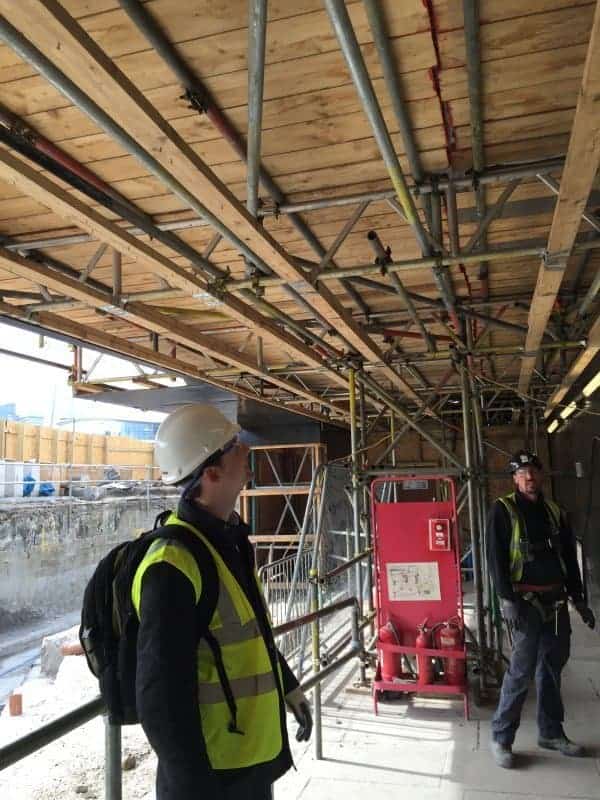 integrated into my working day and encompasses not only our design procedures but also the legal and ethical reasons behind how we design scaffolds. This training teamed with being surrounded by some of the most forward thinking engineers in the industry is giving me the knowledge and skills to become a fantastic design engineer. As my training progresses and I generate more revenue for the company so too my personal income will increase.
Since starting work here and undertaking the in house training scheme I have expressed an interest in pursuing my formal education further which was encouraged and supported by everyone here at 48.3. The mentoring I receive from everyone here in the design team is invaluable, the guidance and support is fantastic. I cannot express enough how much benefit it would be for anyone who is thinking about making this transition to find a mentor. Since being mentored here at 48.3 Scaffold Design I have progressed faster than I could of ever imagined.
integrated into my working day and encompasses not only our design procedures but also the legal and ethical reasons behind how we design scaffolds. This training teamed with being surrounded by some of the most forward thinking engineers in the industry is giving me the knowledge and skills to become a fantastic design engineer. As my training progresses and I generate more revenue for the company so too my personal income will increase.
Since starting work here and undertaking the in house training scheme I have expressed an interest in pursuing my formal education further which was encouraged and supported by everyone here at 48.3. The mentoring I receive from everyone here in the design team is invaluable, the guidance and support is fantastic. I cannot express enough how much benefit it would be for anyone who is thinking about making this transition to find a mentor. Since being mentored here at 48.3 Scaffold Design I have progressed faster than I could of ever imagined.
My words of advice
My final advice is this transition will not happen over night and you will probably question why you are doing it but take it from me it is definitely worth it. I suppose if I had to leave you with a guide to becoming a technical design draughtsman for an advanced scaffolder then I would say:- Make sure your drive is strong because it’s going to be very hard.
- Ask yourself WHY do you want to be a design engineer?
- Be aware that sacrifices will need to be made especially if you have a family with young children.
- Finally and most importantly find a mentor whether that be an individual who has successfully made the transition or a company that is willing to guide you with advice or even training.
BREAKING: Three killed in scaffolding collapse in North Carolina, USA
Three workers are dead and one other is in hospital after a section of scaffolding has collapsed at a tall construction project in North Carolina.
Emergency responders say the scaffold peeled away from the glass and steel building and collapsed into a car park in Raleigh. Authorities are working to identify the dead and the cause of the accident. Construction industry accidents are the leading cause of workplace death in North Carolina, officials say. The four workers were all involved in the construction project, Wake County EMS district chief Jeffrey Hammerstein said. Other workers at the scene said the surviving worker, who is reported to be severely injured, was found breathing but almost unresponsive in a portable toilet. It is not clear whether the man fell into the toilet or was inside when the scaffolding fell. The workers were dismantling the scaffolding when the collapse happened around 11:00 local time (15:00 GMT), local television reported. Emergency officials have cordoned off the area around the construction site, and state and federal investigators are said to be on the scene. The 11-story building under construction is set to open in May, local reports say. Nineteen people were killed at construction sites in North Carolina in 2014, according to the state’s labour department.PLETTAC METRIX Open Days
TRAD Hire & Sales held their second Open Day on Wednesday 4th March 2015. The event, held at the Leeds Depot, introduced PLETTAC METRIX System Scaffolding to existing Key Customers’ and other interested Contractors.
The format of the day and forthcoming Open Days was/is to be scheduled to take place for the rest of this year:
- • Meet and Greet over Tea/Coffee/Pastries etc… • Metrix System overview presentation, unique aspects of the system – by Steve Coshall; • Question and Answers session; • Live practical demonstrations of the Metrix system – by Alan Slater; • Presentation of the use of Metrix from a Contractor’s standpoint – by Mr Des Moore, Group MD; (previously MD of TRAD Scaffolding with over 40 Years Industry experience) • Open Session to discuss specific projects and potential labour/cost savings.

